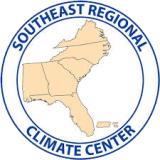Southeast Climate Monthly Webinar: March 26, 2024
March has been warm, with above average temperatures across most of the region. Many rivers and creeks had flooding in the last month, and drought has largely been eliminated. Spring is here, so temperatures are warming and demand for water increases as plants leaf out. This should help to temper flooding the further into spring we get.
Over the spring and early summer, temperatures and precipitation are expected to be above normal, and river flood risk is also expected to be above normal. El Niño, while still influencing the region, continues to weaken and is expected to transition to ENSO-neutral conditions later this spring, with La Niña possibly developing this summer.
Check out the recording below to hear more on Southeast climate conditions and a special presentation, "USA Phenology Network and the 2024 Pollen Season” from Theresa Crimmins of the University of Arizona. For more information, please contact Meredith Muth (meredith.f.muth@noaa.gov).
About This Webinar
The Southeast Climate monthly webinar series is hosted by the Southeast Regional Climate Center, the National Integrated Drought Information System (NIDIS), and the NOAA National Weather Service. These webinars provide the region with timely information on current and developing climate conditions such as drought, floods, and tropical storms, as well as climatic events like El Niño and La Niña. Speakers may also discuss the impacts of these conditions on topics such as agriculture production, water resources, wildfires, and ecosystems







